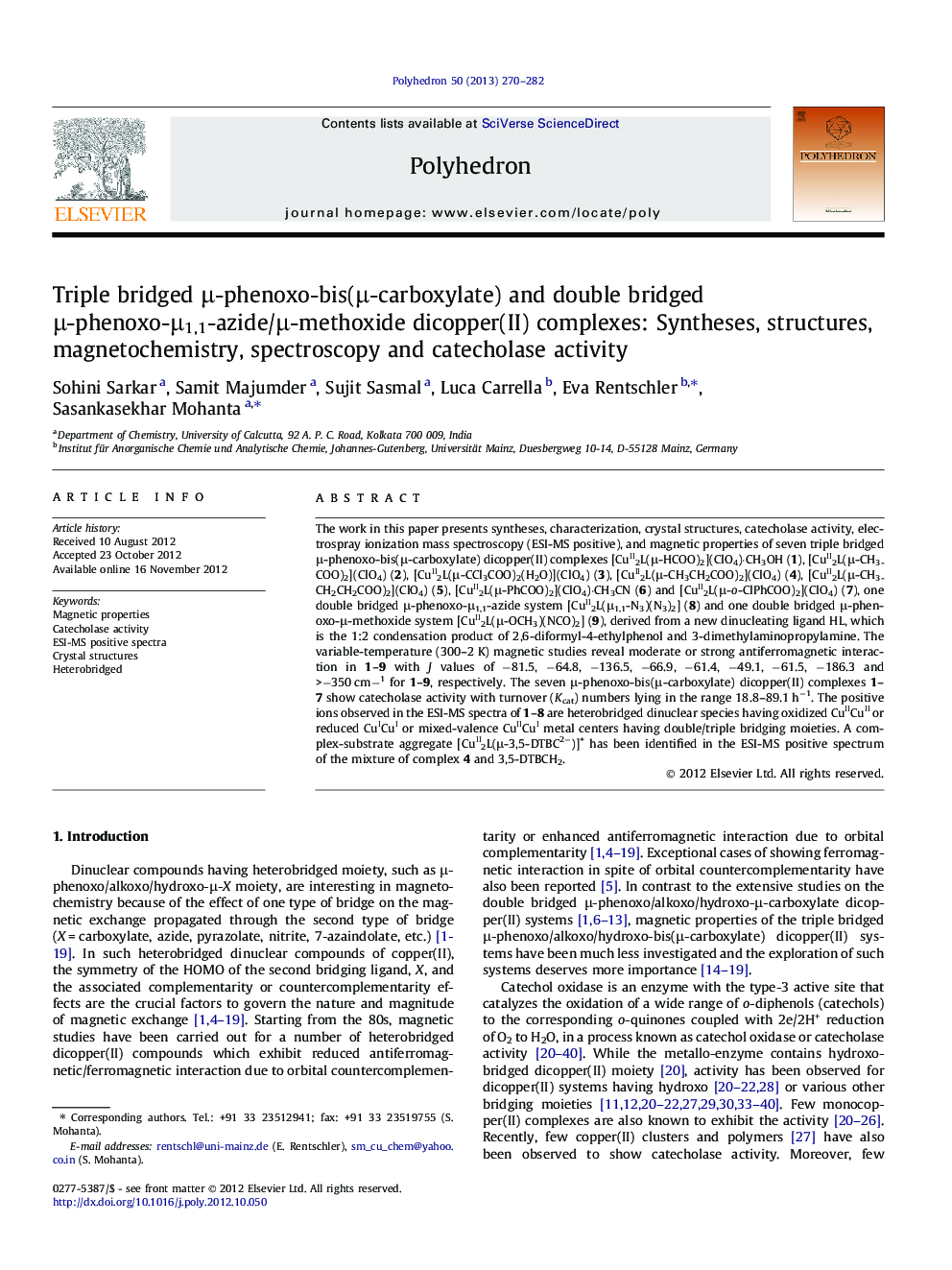| Article ID | Journal | Published Year | Pages | File Type |
|---|---|---|---|---|
| 1334648 | Polyhedron | 2013 | 13 Pages |
The work in this paper presents syntheses, characterization, crystal structures, catecholase activity, electrospray ionization mass spectroscopy (ESI-MS positive), and magnetic properties of seven triple bridged μ-phenoxo-bis(μ-carboxylate) dicopper(II) complexes [CuII2L(μ-HCOO)2](ClO4)·CH3OH (1), [CuII2L(μ-CH3COO)2](ClO4) (2), [CuII2L(μ-CCl3COO)2(H2O)](ClO4) (3), [CuII2L(μ-CH3CH2COO)2](ClO4) (4), [CuII2L(μ-CH3CH2CH2COO)2](ClO4) (5), [CuII2L(μ-PhCOO)2](ClO4)·CH3CN (6) and [CuII2L(μ-o-ClPhCOO)2](ClO4) (7), one double bridged μ-phenoxo-μ1,1-azide system [CuII2L(μ1,1-N3)(N3)2] (8) and one double bridged μ-phenoxo-μ-methoxide system [CuII2L(μ-OCH3)(NCO)2] (9), derived from a new dinucleating ligand HL, which is the 1:2 condensation product of 2,6-diformyl-4-ethylphenol and 3-dimethylaminopropylamine. The variable-temperature (300–2 K) magnetic studies reveal moderate or strong antiferromagnetic interaction in 1–9 with J values of −81.5, −64.8, −136.5, −66.9, −61.4, −49.1, −61.5, −186.3 and >−350 cm−1 for 1–9, respectively. The seven μ-phenoxo-bis(μ-carboxylate) dicopper(II) complexes 1–7 show catecholase activity with turnover (Kcat) numbers lying in the range 18.8–89.1 h−1. The positive ions observed in the ESI-MS spectra of 1–8 are heterobridged dinuclear species having oxidized CuIICuII or reduced CuICuI or mixed-valence CuIICuI metal centers having double/triple bridging moieties. A complex-substrate aggregate [CuII2L(μ-3,5-DTBC2−)]+ has been identified in the ESI-MS positive spectrum of the mixture of complex 4 and 3,5-DTBCH2.
Graphical abstractThe work in this paper presents syntheses, characterization, crystal structures, magnetic properties, catecholase activity, and electrospray ionization mass spectral (positive) studies of seven μ-phenoxo-bis(μ-carboxylate), one μ-phenoxo-μ1,1-azide, and one μ-phenoxo μ-methoxide dicopper(II) complexes derived from a new dinucleating ligand (carboxylate = formate, acetate, trichloroacetate, propionate, butyrate, benzoate, and o-chlorobenzoate).Figure optionsDownload full-size imageDownload as PowerPoint slide
